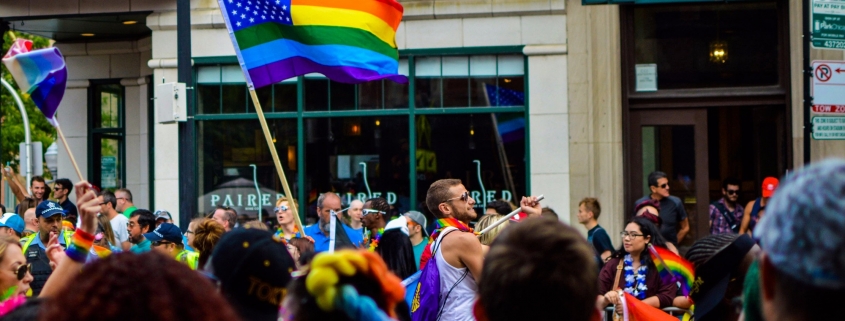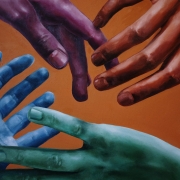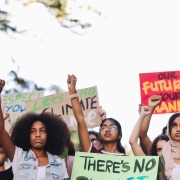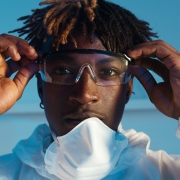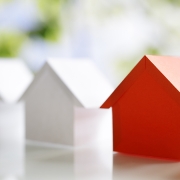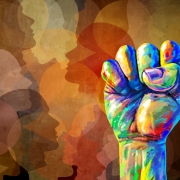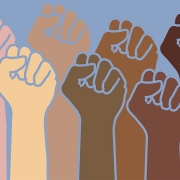We’ve Overcome Stigma and Prejudice, Now Let’s Overcome Drugs and Alcohol
Pride Month sprang from the 1969 Stonewall Uprising in Manhattan. What began as an impassioned march to Central Park to commemorate the riots is now a month-long celebration at huge festivals in cities around the world, promoting dignity, equality, and self-affirmation for the LGBTQ+ community. However, as we wrap the 51st annual Pride Month, it’s important to reflect on another aspect of our community that doesn’t elevate us. In fact, it drags us down: disproportionately heavy alcohol and drug use.
Individuals in the LGBTQ+ community are 90% more likely to use alcohol and drugs than their heterosexual counterparts. More than a third (38%) of LGBTQ+ aged 18 and older reported past year marijuana use, compared to 16% reported by the overall adult population. Opioid use (including misuse of prescription opioids or heroin use) was also higher, with 9% of LGBTQ+ aged 18 or older reporting use compared to 4% among the overall adult population. In 2015, past-year meth use prevalence was more than four times higher among gay men compared to straight men. In West Hollywood, an LGBTQ-centric city, recent surveys indicate open meth use at events (74%) and at bars and clubs (68%) was an issue harming the community.
Why the heavy use of drugs and alcohol? It’s not so difficult to understand. For one, bars and clubs have been a central gathering place for us for decades, providing refuge, connection, and escape from prejudice. Alcohol has long been a backdrop in the areas where we have felt safe.
It is also largely a question of stress, self-esteem and mental health. Compared to their straight counterparts, LGBTQ+ individuals report a disproportionately higher prevalence of Adverse Childhood Experiences (ACEs) – traumatic or stressful life events. A 2020 study published by the Center for American Progress revealed a dramatic picture of measures taken by LGBTQ+ Americans to avoid discrimination: more than half of respondents (54%) had hidden a relationship. Over one in three had moved away from family (32%), changed the way they dressed/mannerisms (35%) and avoided public places (33%). Alcohol and drugs, in addition to being socially normative for our community, have long been used as a poor coping mechanism and escape from internalized homophobia, rejection and shame.
So what can we do about it? It requires a comprehensive approach that includes important policy and social norms changes. On a policy level, the adoption of reasonable practices that optimize LGBTQ-centric entertainment districts — including addressing excessive bar and club density, operational mismanagement and community impact — is crucial. Pride events are another area where important policy shifts are required.
The “Tobacco Policies and Alcohol Sponsorship at Lesbian, Gay, Bisexual, and Transgender Pride Festivals: Time for Intervention” study observed that, while sexual health promotion is common at pride events, few events have policies promoting health in other areas. The study finds that while reducing and/or eliminating alcohol sponsorship of Pride events is challenging in the near term, “…we believe it is critical to renew a conversation about critically appraising the marketing efforts of industries that sell products that disproportionately target and harm LGBT+ communities and communities of color.”
There is also tremendous progress to be made shifting away from alcohol and drugs as a normative part of our culture. Alcohol-free gathering spaces and events can be cultivated by public health practitioners, LGBTQ-centric organizations, Pride organizers and public officials. The City of West Hollywood, for example, has sponsored a large alcohol-free space at LA Pride that attracts thousands of attendees for the past seven years.
Powerful messaging and initiatives from influencers and organizations that highlight health, wellness and self-esteem will make a dramatic impact over time in changing our community’s attitudes about drugs and alcohol. It’s especially important for those who are newly coming out.
Pride is a time to celebrate all that is great about our community – all that we’ve contributed and how far we’ve come. Now’s the time to look squarely at the problematic drinking and drug use that has long plagued us and that, tragically, is born from a long history of discrimination and prejudice. Everything is already shifting for our community and this can too. A 2010 poll of 1,500 people who are already out, found that among the over-60s, the average age they had come out was 37. In the group aged 18 to 24, it was 17. What a tremendous indicator or our progress toward self-acceptance and with it, health, wellness and self-love.
Happy Pride.
Author:
David R. Shorey
Program Manager, IPS
David R. Shorey is a Program Manager at the Institute for Public Strategies, a Southern California-based nonprofit that works alongside communities to build power, challenge systems of inequity, protect health and improve quality of life.

